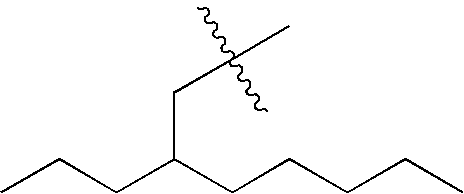Surfactant composition and method of forming
a technology of surfactant composition and composition, which is applied in the direction of foam regulating composition, detergent compounding agent, liquid soap, etc., can solve the problems of increasing the cost of i&i cleaning formulation, non-biodegradable, and potentiating hazards of aquatic life, so as to improve the surface wetting effect, reduce the surface tension of water, and optimize the effect of performan
- Summary
- Abstract
- Description
- Claims
- Application Information
AI Technical Summary
Benefits of technology
Problems solved by technology
Method used
Image
Examples
examples
[0061]A series of surfactant compositions (Compositions 1-21) are formed according to the present invention. Specifically, amounts of the First Aliphatic Alcohol and the Second Aliphatic Alcohol are added to a vessel and mixed. Subsequently, potassium hydroxide (KOH) as the Metal Catalyst is added to the vessel and mixed with the First Aliphatic Alcohol and the Second Aliphatic Alcohol to form a mixture. The mixture is heated to 85° C. and agitated for 1 hour. Subsequently, the mixture is heated to 110° C. and adjusted to a pressure of approximately 90 psig. Then, Ethylene Oxide is added to the mixture to react with the First Aliphatic Alcohol and the Second Aliphatic Alcohol, thereby forming the First Surfactant and the Second Surfactant, forming the Polyethylene Glycol in situ, and forming the Compositions 1-21. The Ethylene Oxide is added to the mixture at a rate of approximately 1100-1200 gm / hr while the temperature of the mixture is allowed to increase to approximately 145° C. ...
PUM
| Property | Measurement | Unit |
|---|---|---|
| contact angle | aaaaa | aaaaa |
| concentration | aaaaa | aaaaa |
| pressure | aaaaa | aaaaa |
Abstract
Description
Claims
Application Information
 Login to View More
Login to View More - R&D
- Intellectual Property
- Life Sciences
- Materials
- Tech Scout
- Unparalleled Data Quality
- Higher Quality Content
- 60% Fewer Hallucinations
Browse by: Latest US Patents, China's latest patents, Technical Efficacy Thesaurus, Application Domain, Technology Topic, Popular Technical Reports.
© 2025 PatSnap. All rights reserved.Legal|Privacy policy|Modern Slavery Act Transparency Statement|Sitemap|About US| Contact US: help@patsnap.com



